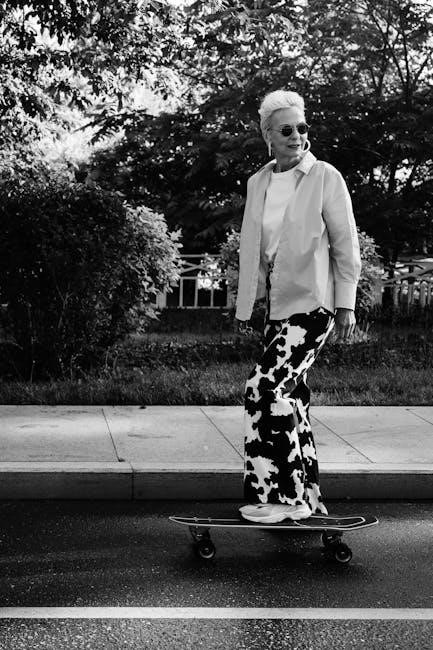Welcome to the world of skateboard bushings! This guide will navigate you through everything you need to know about these crucial components. Learn how bushings affect your ride, from turning ability to overall stability, and unlock customization potential.
Skateboard bushings are small, yet vital, components that significantly impact a skateboard’s performance. Positioned on the kingpin of the trucks, these urethane cylinders allow the board to turn and lean. They act as a suspension system, translating a rider’s weight and movements into controlled board motion. Understanding bushings is crucial for tailoring a skateboard to individual riding styles and preferences.
This guide provides an overview of skateboard bushings, covering materials, durometer scales, shapes, and customization options. We’ll delve into the durometer scale, explaining the difference between A and B scales, and offer recommendations based on rider weight. We will also explore the impact of bushing shape on turning characteristics, comparing cone and barrel bushings. Finally, we’ll provide guidance on replacing bushings and fine-tuning your setup for optimal performance. Whether you’re a beginner or an experienced skater, this guide will provide valuable insights into the world of skateboard bushings.
What are Skateboard Bushings?
Skateboard bushings are small, cylindrical components made of urethane that are essential for turning and carving. These pliable parts sit on the kingpin of your skateboard trucks and act as cushions, allowing your board to lean and respond to your movements. Without bushings, your trucks would be rigid, making it impossible to steer effectively.
Bushings are located on either side of the truck hanger, held in place by washers and the kingpin nut. Tightening or loosening the kingpin nut compresses or releases the bushings, altering the board’s responsiveness. Tighter trucks, achieved by compressing the bushings, offer more stability at higher speeds, while looser trucks, allowing more bushing movement, provide greater turning agility.
Bushings come in various shapes, sizes, and durometers (hardness levels), allowing riders to customize their board’s feel. Choosing the right bushings is critical for achieving optimal performance, whether you prefer cruising, street skating, or downhill riding. Understanding the different types of bushings and how they affect your ride is key to unlocking your skateboard’s full potential.
Materials: Polyurethane Construction
Skateboard bushings are primarily crafted from polyurethane, a versatile polymer prized for its durability, flexibility, and resilience. Polyurethane’s unique properties make it ideally suited for handling the constant stress and compression that bushings endure during skateboarding. The specific formulation of polyurethane used in bushings can be adjusted to achieve different levels of hardness and rebound, allowing manufacturers to fine-tune their performance.
Polyurethane bushings provide the necessary resistance to allow trucks to return to center after a turn. The material’s capacity to absorb shocks and vibrations also contributes to a smoother, more controlled ride. The chemical process used to create the bushing determines its hardness. Skateboard wheels are also made of polyurethane.
The quality of the polyurethane used directly impacts the bushing’s lifespan and performance. Higher-quality polyurethane bushings resist deformation and cracking, maintaining their shape and responsiveness over time. Riders benefit from a consistent and predictable feel, enhancing their control and confidence. The material is versatile and used for various hardnesses.
Durometer Scale Explained (A and B)
The durometer scale is the standard measurement of a skateboard bushing’s hardness. Bushings, like wheels, are measured using this scale. Most skateboard bushing manufacturers utilize the Durometer A scale, ranging from 1 to 100. A higher number indicates a harder bushing, while a lower number signifies a softer bushing. However, some companies, like Bones, employ the Durometer B scale, which reads 20 points lower than the A scale. This allows for a more extended range, accommodating even harder bushings.
Understanding the durometer scale is crucial for selecting bushings that match your weight, riding style, and desired truck responsiveness. Softer bushings (lower durometer) offer greater flexibility and easier turning, ideal for carving and cruising. Harder bushings (higher durometer) provide increased stability and resistance to compression, suitable for high-speed riding and tricks.
The B scale allows the manufacturer to produce harder wheels while making sense of the scale. The A scale is often limited. The scale is utilized for wheels, pivot cups, and bushings. The higher the number, the harder the material is.
Understanding the Durometer Scale
The durometer scale is essential for understanding skateboard bushings. It measures the hardness of the urethane, directly affecting how your board turns and responds. Typically, skateboard bushings use the A scale, ranging from 1 to 100. A higher number indicates a harder bushing, providing more resistance and stability. Conversely, a lower number signifies a softer bushing, allowing for easier turning and a more fluid feel.
Choosing the right durometer is crucial for customizing your ride. Factors like your weight, skating style, and the type of terrain you skate on influence the ideal durometer range. Lighter riders often prefer softer bushings for easier turning, while heavier riders typically benefit from harder bushings for increased stability.
Experimentation is key to finding the perfect durometer for your setup. Consider starting with the recommended range for your weight and adjusting based on your personal preferences and riding conditions. Remember, the durometer scale is your guide to fine-tuning your skateboard’s performance.
Durometer A vs. Durometer B
While the Durometer A scale is most commonly used for skateboard bushings, a few manufacturers utilize the Durometer B scale. Understanding the difference between these scales is essential when selecting bushings. The B scale measures 20 points lower than the A scale, allowing for a wider range to accommodate harder bushings. For instance, an 80B bushing is equivalent to a 100A bushing.

The B scale provides more resolution for harder bushings, offering skaters more fine-tuned control over their board’s responsiveness. This can be particularly beneficial for downhill skateboarding or aggressive street skating where stability and control are paramount. However, it’s important to note that the B scale isn’t as widely adopted, making A scale bushings more readily available.
When comparing bushings, always pay attention to the scale being used. Confusing an A scale rating with a B scale rating can lead to selecting bushings that are either too soft or too hard for your needs. Be aware of the scale to ensure you are choosing the right bushings for your weight and desired riding style.
Bushing Durometer Recommendations
Selecting the correct bushing durometer is crucial for optimal skateboard performance. Your weight, riding style, and truck setup all play a role in determining the ideal durometer. Generally, lighter riders benefit from softer bushings, while heavier riders require harder bushings for stability. Softer bushings allow for easier turning and carving, while harder bushings provide more resistance and control at higher speeds.
For street skating and technical tricks, a medium durometer is often preferred. This provides a balance between responsiveness and stability. Downhill skateboarding typically requires harder bushings for maximum stability and control. Longboarding and cruising often benefit from softer bushings for smooth turns and comfortable riding;
Experimentation is key to finding the perfect durometer. Consider starting with the manufacturer’s recommendations based on your weight. Don’t be afraid to try different durometers to fine-tune your setup to your personal preferences. Remember, bushing choice is subjective and depends on individual riding style and board feel.
Consider your deck’s flexibility when choosing bushing durometer. A flexy deck will twist as you lean, reducing the input to your trucks, so a softer bushing may be needed to compensate.
Weight and Bushing Durometer Chart

A weight and bushing durometer chart provides a general guideline for selecting the appropriate bushing hardness based on rider weight. It’s important to remember that this is just a starting point, and personal preference may dictate adjustments. The chart typically suggests a range of durometers for different weight categories, allowing riders to choose based on their desired level of responsiveness and stability.
For example, a rider weighing less than 140 lbs might opt for bushings in the 81A to 85A range for looser trucks, or 86A to 90A for tighter trucks. A heavier rider, exceeding 200 lbs, may prefer bushings around 100A for maximum stability. The chart helps beginners understand the relationship between weight and bushing hardness, providing a foundation for experimenting and fine-tuning their setup.
Remember to consider your riding style when interpreting the chart. If you prefer carving and quick turns, a softer bushing within the recommended range might be ideal. If you prioritize stability and speed, a harder bushing might be more suitable. Ultimately, the best bushing durometer is the one that feels most comfortable and allows you to ride with confidence.

Bushing Shapes and Their Impact on Performance
Bushing shapes play a significant role in how a skateboard truck performs. Different shapes affect the turning responsiveness, stability, and overall feel of your ride. The most common shapes are cone and barrel, but variations exist to fine-tune your setup.
Conical bushings, narrower at the top, offer a progressive feel, meaning they become more resistant to turning as you lean further. This is ideal for carving and providing a smooth, controlled turn. Barrel bushings, cylindrical in shape, provide a more consistent resistance throughout the turn, offering stability and control at higher speeds.
Combining different shapes can create a unique feel. A cone bushing on top and a barrel bushing on the bottom is a common setup for a responsive and stable ride. The cone allows for easy initiation of turns, while the barrel provides support and prevents wheelbite. Experimenting with different combinations can greatly impact your riding experience, allowing you to dial in your trucks for your specific style and preferences.
Cone vs. Barrel Bushings
Choosing between cone and barrel bushings is a crucial decision in setting up your skateboard. Each shape offers distinct performance characteristics that cater to different riding styles. Cone bushings, with their tapered design, excel in providing a fluid and responsive turning experience. They offer less resistance initially, allowing for easy carving and quick maneuvers. However, they can become less stable at higher speeds due to their progressive compression.
Barrel bushings, on the other hand, are cylindrical and provide a more consistent level of resistance throughout the turning range. This makes them ideal for riders seeking stability and control, particularly at higher speeds or during downhill runs. They offer a more predictable feel and help prevent wheelbite by providing a solid base of support.
The ideal choice between cone and barrel bushings depends on your personal preference and riding style. Many skaters opt for a combination of both, using a cone bushing on the top truck for increased responsiveness and a barrel bushing on the bottom truck for added stability. Experimentation is key to finding the perfect setup that suits your needs.
Customization and Riding Style
Skateboard bushings are a key element in tailoring your board’s performance to match your specific riding style. Customizing your bushings allows you to fine-tune responsiveness, stability, and overall feel. Softer bushings are excellent for carving and provide a more playful, reactive experience, ideal for cruising and park skating. They require less force to initiate turns, making them forgiving and fun.
Conversely, harder bushings provide greater stability, crucial for high-speed riding and downhill skateboarding. They resist compression, offering a more controlled and predictable feel. Street skaters often prefer medium-durometer bushings, striking a balance between responsiveness and support. This allows for quick maneuvers while maintaining stability during tricks and landings.
Experimentation is key to discovering the perfect bushing setup; Consider your weight, the type of terrain you ride, and your personal preferences. Don’t be afraid to mix and match different durometers and shapes to achieve the desired feel. Bushing customization unlocks a new level of control, allowing you to truly connect with your board and enhance your skateboarding experience.
Replacing Skateboard Bushings

Replacing your skateboard bushings is a straightforward process that can significantly improve your board’s performance. Over time, bushings wear down, losing their shape and responsiveness. Recognizing the signs of worn bushings is the first step. Look for cracks, deformation, or a general mushiness in feel. If your board feels unstable or unresponsive, it might be time for a replacement.
To replace your bushings, you’ll need a skate tool or wrench, and a set of new bushings. Begin by loosening the kingpin nut on your trucks. Remove the old bushings, noting their orientation for correct installation of the new ones. Insert the new bushings, ensuring they are seated properly in the truck’s bushing seat. Tighten the kingpin nut until you achieve your desired truck tightness. Be careful not to over-tighten, as this can damage the bushings.
After replacing your bushings, take your board for a test ride. Adjust the kingpin nut as needed to fine-tune the feel of your trucks. With fresh bushings, your board will feel more responsive and stable, enhancing your overall skateboarding experience.
